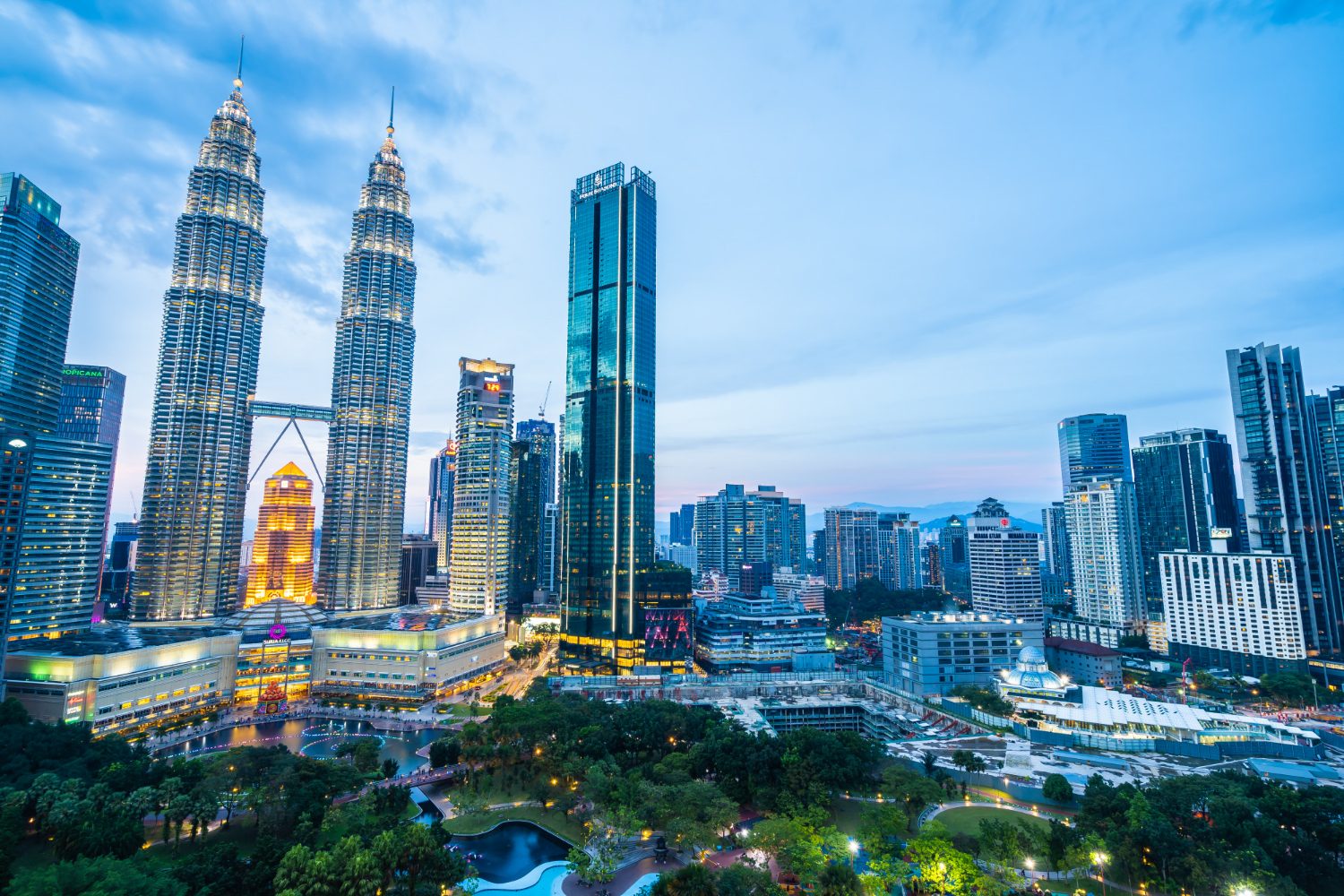Malaysia’s Data Centre Ambitions: Can It Challenge Singapore’s Dominance?

And the winner is . . . Malaysia?
It is well-established that Singapore is the digital hub of Southeast Asia and the region’s data centre fulcrum. But, with Artificial Intelligence (AI) booming and demand for data centres rising, the search for Southeast Asia’s next data centre powerhouse is now in full swing.
At this point, so far, Malaysia seems to be winning—and winning big.
In just over a year, Malaysia has secured billions worth of investment from Big Tech, including an estimated USD $2 billion from Google to build a data centre in the country and ultimately transform it into a Google Cloud region. Google’s announcement came just days after Microsoft formalised a four-year, USD $2.2 billion investment to build new cloud and AI infrastructure in Malaysia, as well as establish a national AI centre as part of the Malaysian government’s AI initiatives. Months earlier, in December 2023, NVIDIA announced an even bigger investment in Malaysia, committing USD $4.3 billion to develop AI infrastructure in the country via a partnership with YTL.
These mammoth deals underscore Malaysia’s meteoric rise as a digital destination for tech companies. But Big Tech firms aren’t the only ones bringing their business to this Southeast Asian nation. ST Telemedia Global Data Centres had previously announced in November 2023 plans to build data centres in Johor and Cyberjaya, while EDGNEX Data Centres by DAMAC is also looking to enter the Malaysian data centre market via a USD $52 million facility in Cyberjaya. Meanwhile, Infinaxis Data Centre Holdings is in the midst of constructing a facility in Cyberjaya, with an opening targeted for 2025.

Clearly, Malaysia is in pole position in this race for data centre supremacy among Southeast Asian nations not named Singapore. But why is it winning anyway?
Malaysia Ticks All the Boxes

The winning formula, according to experts, is a combination of factors. And, for Arun Kumar, Regional Director, Asia Pacific, at ManageEngine, government support is foremost among these factors.
“Backed by the Malaysian government, incentives such as MyDIGITAL, and support for data centre investments—including tax breaks and a favourable regulatory environment—Malaysia has emerged as the preferred digital hub and the ‘Heart of Digital ASEAN,’” Kumar told Data & Storage Asia (DSA).
Then again, government support can only do so much. For a country to be an appealing data centre destination, it must also meet other critical criteria, including power capacity, land and operational costs, fast and reliable connectivity, and market demand.
Kumar and David Li, Chairman and CEO of GreaterHeat, believe Malaysia ticks all these boxes.

“Malaysia is among the Southeast Asian peers that have attracted investments by global data centre players in the Asia Pacific region because of supportive government policy, high levels of connectivity, a large population, abundant cost-competitive land, inexpensive sustainable energy, and its close proximity to Singapore, the hot spot for innovations. The lower operational costs also make the country a cost-effective alternative for data centre operations,” Kumar noted.
The environment in Malaysia appears to be so appealing that ManageEngine, a leading IT management software provider, is set to open an office in the country that will eventually serve as the firm’s hub for its operations in greater Southeast Asia.
“Malaysia stands out with its robust power infrastructure, lower land and operational costs, and favourable government policies, which have attracted significant investments from tech giants like Microsoft and Google. These factors make Malaysia an appealing destination for companies looking to set up data centres,” added Li, who identified Indonesia as another emerging data centre hub in the region because of its large population and strategic geographical location.
Rising All the Way to the Top: Malaysia Is Poised to Overtake Singapore
Indonesia’s rise, though, might be no match to the momentum already built up by Malaysia. In fact, the city of Johor Bahru is on pace to potentially overtake Singapore. This is according to James Murphy, Managing Director at DC Byte, a data centre intelligence company that ranked Johor as the fastest-growing market in Southeast Asia in its “2024 Global Data Centre Index.”
“It looks like in the space of a couple of years, [Johor Bahru] alone will overtake Singapore to become the largest market in Southeast Asia from a base of essentially zero just two years ago,” Murphy told CNBC in June.

Data from the “2024 Global Data Centre Index” show that when all are accounted for—existing data centres, facilities under construction, and planned data centres—Johor Bahru has 1.6 gigawatts (GW) of total data centre supply. So far, there are 45 existing live facilities in Malaysia, according to Amy Wong, Executive Director for Research and Consultancy at real estate consulting firm Knight Frank, and another 44 sites either in construction or at the planning stage.
Meaning, that once everything goes online, Malaysia will pass Singapore in live data centre capacity and trail only Japan and India in all of Asia.
A Fork in the Road?
Malaysia’s progress towards data centre dominance, though, might soon encounter a major complication: Resource strain. According to Kenanga Investment Bank Research, electricity demand from data centres in Malaysia can potentially reach the total maximum demand of 5 GW by 2035. But, at the moment, Malaysian electricity company Tenaga Nasional Berhad says the installed electrical capacity for the entirety of Malaysia is around 27 GW only. This opens up the very real possibility that Malaysia won’t have enough power to accommodate the energy needs of data centres while also providing the power requirements of everyday Malaysians.
Data centres are massive water guzzlers, too, with a 100-megawatt (MW) facility using about 1.1 million gallons of water every day for cooling purposes alone—roughly equivalent to the daily water consumption of some 10,000 people. That figures to be a major headache in the next five years, with the National Water Services Commission, Malaysia’s main water regulator, warning of an imminent water crisis due to a combination of climate change, water wastage, and ageing water infrastructure.
No less than Johor Bahru City Council Mayor Datuk Mohd Noorazam Osman expressed concern about the mounting energy and water needs of data centres, noting how data centre investments should not compromise the needs of Malaysian citizens—particularly in Johor, where water supply shortages have been an ongoing issue over the years.
“People are too hyped up about data centres nowadays, but the issue in Johor is we do not have enough water and power,” the mayor said in a panel discussion at Johor Conversations 2024. And with Johor alone hosting 30 hyperscalers—a facility with at least 5,000 servers occupying 10,000 square feet or more—water and power shortages might be looming anytime soon.
Perhaps predictably, data centre stakeholders, like Gary Goh, Chief Executive at Sprint DC Consulting, are singing a different tune. In fact, he boldly claimed in June that Malaysia’s energy reserve “is sufficient to supply energy to new data centres currently” on account of Peninsular Malaysia generating more power than it consumes—resulting in a supposed surplus of energy.
It is an incredibly optimistic prognosis—and possibly misguided as well, especially when there is growing sentiment that the opposite is true.
“Our energy reserves may not be able to handle the data centre growth in 10 years,” admitted Chin Soo Mau, Managing Director at Pekat Group, a supplier of solar systems in Malaysia. “The government needs a short-term and long-term plan on electricity supply and distribution.”
What the Future Holds
Complications aside, Malaysia’s rise as a data centre hub is undeniable. And with Johor already taking steps to mitigate any potential water or power crisis that might arise from this data centre boom (like requiring new applicants to use green energy), it appears the country is determined to keep this momentum going.
With billions in investment on the line, it is easy to see why.
After all, why stop when you are winning, right?




